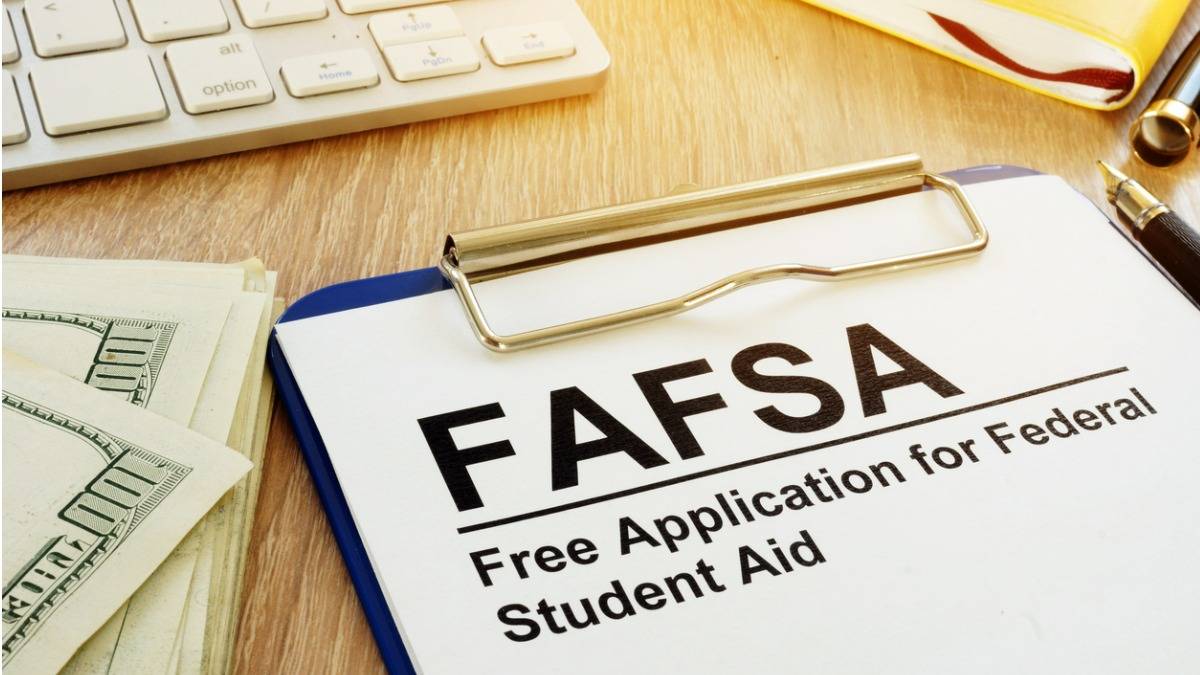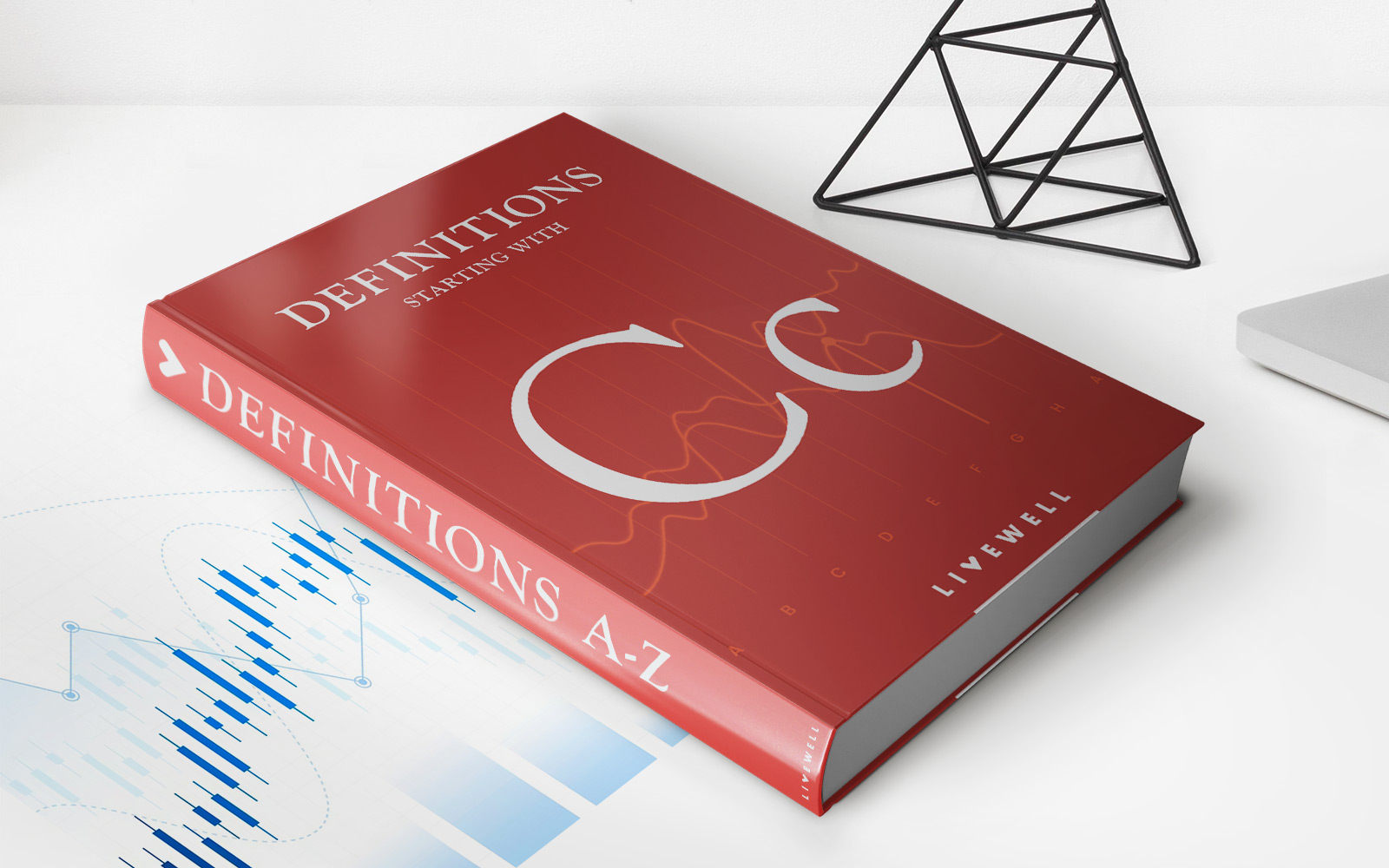

Finance
How To Pay Student Loans Without A Job?
Published: January 20, 2024
Learn effective strategies to repay your student loans even without a job. Explore smart financial solutions to manage your debt and secure a stable future. #Finance #StudentLoans #DebtManagement
(Many of the links in this article redirect to a specific reviewed product. Your purchase of these products through affiliate links helps to generate commission for LiveWell, at no extra cost. Learn more)
Table of Contents
- Introduction
- Exploring Loan Repayment Options
- Income-Driven Repayment Plans
- Public Service Loan Forgiveness
- Temporary Suspension of Payments: Deferment and Forbearance
- Consolidation and Refinancing Options
- Seeking Alternative Sources of Income
- Budgeting and Cutting Expenses
- Utilizing Loan Assistance Programs and Grants
- Exploring Loan Discharge and Forgiveness Programs
- Conclusion
Introduction
Having student loans can be a significant burden, especially when you find yourself without a job. It can seem overwhelming to think about repaying your loans when you don’t have a steady income. However, it’s important to remember that there are options available to help you navigate this challenging situation.
In this article, we will explore various strategies and solutions for paying student loans without a job. While it may require some creativity and resourcefulness, there are ways to manage your loan payments and protect your financial future.
It’s essential to address your student loan obligations as early as possible to avoid delinquency or default, which can have serious consequences on your credit score and financial well-being. By understanding the available options and crafting a plan tailored to your situation, you can take control of your student loan repayment even in the absence of a job.
Remember, every borrower’s circumstances are unique, and what works for one individual may not work for another. It’s crucial to consider your specific circumstances, financial goals, and available resources when determining the best approach to manage your student loans without a job.
Now, let’s delve into the various strategies and solutions you can employ to pay off your student loans successfully.
Exploring Loan Repayment Options
When you don’t have a job and need to pay off your student loans, it’s crucial to explore the different repayment options available to you. These options are designed to provide flexibility and assistance to borrowers facing financial difficulties. Here are some of the key repayment options you should consider:
- Income-Driven Repayment Plans: Income-driven repayment plans can be an excellent solution for borrowers with limited or no income. These plans calculate your monthly loan payment based on your discretionary income and family size. They typically offer lower monthly payments and extend the repayment term, making it more manageable for you to meet your financial obligations. It’s essential to research and compare the various income-driven plans, such as Income-Based Repayment (IBR), Pay As You Earn (PAYE), and Revised Pay As You Earn (REPAYE), to find the one that best suits your needs.
- Public Service Loan Forgiveness: If you were working in a qualifying public service job before becoming unemployed, you may be eligible for the Public Service Loan Forgiveness (PSLF) program. Under PSLF, borrowers who make 120 qualifying monthly payments while working full-time for a qualifying employer may be eligible to have their remaining loan balance forgiven. This program can provide significant relief for those with a history of public service work.
- Temporary Suspension of Payments: When you’re unemployed, you may qualify for temporary suspension of payments through deferment or forbearance. Deferment allows you to temporarily postpone your loan payments, typically for specific reasons such as unemployment, economic hardship, or returning to school. Forbearance, on the other hand, allows you to temporarily reduce or pause your loan payments due to financial hardship. It’s important to understand that interest may continue to accrue during these periods, so it’s advisable to explore other options first before considering deferment or forbearance.
By exploring these loan repayment options, you can find a solution that aligns with your current financial situation and provides relief during periods of unemployment. It’s crucial to communicate with your loan servicer to determine eligibility and navigate the application processes for these programs effectively.
Income-Driven Repayment Plans
Income-driven repayment plans can be a lifeline for borrowers without a job or with limited income. These plans set your monthly loan payment based on your discretionary income, making them more affordable during challenging financial times. Here are some key points to consider about income-driven repayment plans:
1. Income-Based Repayment (IBR): This plan caps your monthly payment at 10-15% of your discretionary income, depending on when you took out your loans. If you have only federal Direct Loans, you repay them for 20-25 years, and any remaining balance is forgiven. However, the forgiven amount is considered taxable income.
2. Pay As You Earn (PAYE): PAYE caps your monthly payment at 10% of your discretionary income and offers forgiveness after 20 years of qualifying payments. This plan is generally for borrowers who are newer to repayment and have financial hardship.
3. Revised Pay As You Earn (REPAYE): REPAYE also caps your monthly payment at 10% of discretionary income for borrowers with Direct Loans. For those with graduate or professional school debt, REPAYE extends the repayment period to 25 years before forgiveness can occur. Married borrowers will have their spouse’s income considered in the calculation, regardless of how they file their taxes.
4. Income-Contingent Repayment (ICR): ICR is available for Direct Loans and Parent PLUS Loans. It calculates payments based on your income and family size and typically, caps them at 20% of discretionary income. After 25 years of qualifying payments, you may be eligible for loan forgiveness.
Choosing the right income-driven repayment plan depends on various factors, including your income, family size, loan types, and future financial plans. It’s important to research and compare the options available to you, taking into consideration the potential monthly payment amounts, forgiveness eligibility, and tax implications.
If you’re interested in enrolling in an income-driven repayment plan, contact your loan servicer to discuss your eligibility and initiate the application process. They will guide you through the necessary steps and help ensure that you benefit from the appropriate repayment plan.
Keep in mind that while income-driven repayment plans can provide temporary relief, they may result in longer repayment terms and higher overall interest payments. It’s crucial to carefully consider the potential long-term financial implications and create a plan to manage your loans efficiently once your financial situation improves.
Public Service Loan Forgiveness
For borrowers who have been or are currently employed in qualifying public service jobs, the Public Service Loan Forgiveness (PSLF) program offers a promising opportunity for loan forgiveness. Here are some key points to understand about PSLF:
1. Eligibility: To be eligible for PSLF, you must work full-time for a qualifying employer, such as a government organization, non-profit organization, or certain non-profit organizations that provide qualifying public services. It’s important to confirm that your employer qualifies for PSLF before applying.
2. Qualifying Payments: To qualify for forgiveness under PSLF, you must make 120 qualifying monthly payments while working full-time for a qualifying employer. These payments must be made under a qualifying repayment plan, such as an income-driven repayment plan, and must be made on time. The 120 payments do not need to be consecutive.
3. Forgiveness: Once you have made the required 120 qualifying payments, you may be eligible for loan forgiveness. This means that the remaining balance on your loans will be forgiven, and you will no longer be responsible for repaying that amount. It’s important to note that the forgiven amount under PSLF is not considered taxable income.
4. Certification and Documentation: To ensure that you are on track for PSLF, it’s important to submit the Employment Certification Form annually or whenever you change employers. This form helps track your progress towards the required 120 qualifying payments. It’s also advisable to keep detailed documentation of your employment and payment history to support your PSLF application in the future.
5. Loan Types: PSLF is available for borrowers with federal Direct Loans, including Direct Stafford Loans, Direct PLUS Loans, and Direct Consolidation Loans. Other types of federal student loans, such as Federal Family Education Loans (FFEL) and Perkins Loans, are not eligible for PSLF. However, you can consolidate these loans into a Direct Consolidation Loan to become eligible for PSLF.
PSLF can provide substantial relief for borrowers with a history of public service work. If you believe you may qualify for PSLF, it’s important to explore the eligibility criteria, understand the program requirements, and maintain accurate documentation of your employment and payment history. Contact your loan servicer or visit the official Federal Student Aid website for more information on PSLF and the necessary steps to apply for loan forgiveness.
Remember, PSLF requires a long-term commitment, and it’s important to carefully evaluate your career goals and financial plans before pursuing this option. While PSLF can offer significant benefits, it’s essential to ensure that it aligns with your long-term goals and financial stability.
Temporary Suspension of Payments: Deferment and Forbearance
When you find yourself without a job, temporary suspension of payments through deferment or forbearance can provide relief from your student loan payments. While these options may not forgive your loans, they can offer temporary flexibility during periods of financial hardship. Here’s what you need to know about deferment and forbearance:
1. Deferment: Deferment allows you to temporarily stop making payments on your federal student loans. During a deferment, the interest may not accrue on certain loan types, such as subsidized federal loans. Deferment is typically granted for specific reasons, such as unemployment, economic hardship, enrollment in school, or military service. It’s important to note that interest may continue to accrue on unsubsidized federal loans and private loans during deferment, potentially increasing the total amount you owe.
2. Forbearance: Forbearance also provides temporary relief from making loan payments, but unlike deferment, interest continues to accrue on all loan types, including both federal and private loans. Forbearance is typically granted due to financial hardship or other qualifying reasons. You can choose between general forbearance, which is discretionary and granted by the loan servicer, or mandatory forbearance, which occurs under specific circumstances, such as serving in Americorps or being a teacher in a high-need field.
To request deferment or forbearance, you will need to contact your loan servicer and provide any necessary documentation to support your request. Keep in mind that deferment and forbearance are meant to be temporary solutions, and it’s important to resume making payments as soon as you are able to avoid further interest accrual and potential negative consequences for your credit score.
It’s important to note that deferment and forbearance do not eliminate your obligation to repay your loans. Additionally, using these options may extend your repayment term, resulting in higher overall payments or additional interest accrual. Therefore, it’s advisable to explore other repayment options first, such as income-driven repayment plans, before considering deferment or forbearance.
Every borrower’s situation is unique, so it’s crucial to evaluate your specific circumstances and choose the option that best aligns with your financial goals and needs. Contact your loan servicer to discuss your eligibility for deferment or forbearance and to understand the implications and requirements of these options.
Consolidation and Refinancing Options
When you’re facing student loan payments without a job, exploring consolidation and refinancing options can help simplify your repayment strategy and potentially lower your monthly payments. Here are two options to consider:
1. Consolidation: Loan consolidation is the process of combining multiple federal student loans into a single loan with a new repayment term. This can make your payments more manageable by providing one monthly payment instead of multiple. Consolidation also allows you to choose a new repayment plan, such as an income-driven plan, which can result in lower monthly payments. However, it’s important to note that consolidation may not lower your overall interest rate, and it could potentially extend your repayment term, resulting in more interest being paid over time.
2. Refinancing: Refinancing involves obtaining a new loan from a private lender to pay off your existing student loans. The new loan typically comes with a new interest rate, repayment term, and potentially different terms and conditions. Refinancing can be a good option if you have private student loans or if you qualify for a significantly lower interest rate. It can help lower your monthly payments, save money on interest, or potentially pay off your loans more quickly. However, keep in mind that refinancing federal student loans with a private loan means you will lose federal loan benefits and protections, such as income-driven repayment plans and loan forgiveness programs.
Before consolidating or refinancing your loans, it’s important to carefully consider the potential benefits and drawbacks. Evaluate your current interest rates, repayment terms, and any federal benefits you may be eligible for. Research and compare private lenders to find competitive interest rates and terms that meet your needs.
Contact your loan servicer or various private lenders to discuss your options and understand the potential impact on your loan repayment. Be sure to read and understand the terms and conditions of any loan consolidation or refinancing agreement before making a decision.
Consolidation and refinancing can be valuable tools in managing your student loans without a job. However, it’s important to weigh the benefits and risks, considering the specific details of your loans and financial situation. Consult with a financial advisor if needed, to make an informed choice that aligns with your long-term financial goals.
Seeking Alternative Sources of Income
When you don’t have a job but need to cover your student loan payments, seeking alternative sources of income can help bridge the financial gap. Here are some strategies to consider:
1. Freelancing and Gig Work: Explore freelance opportunities or gig work in your field of expertise. Platforms such as Upwork, Fiverr, and TaskRabbit offer a wide range of short-term projects and tasks that can help generate income. You can offer services like writing, graphic design, virtual assistance, tutoring, or completing small tasks for others.
2. Part-Time or Temporary Jobs: Look for part-time or temporary job opportunities in your area. This could include retail, hospitality, customer service, or delivery jobs. While it may not be in your desired field, it can provide a steady income to help cover your expenses, including student loan payments, until you secure a full-time position.
3. Online Entrepreneurship: Consider starting an online business or selling products through e-commerce platforms like Etsy or Shopify. This could involve creating and selling handmade crafts, digital products, or offering consulting services. The internet offers numerous opportunities for individuals to monetize their skills and passions.
4. Renting out Assets: If you have spare rooms in your home or extra resources, consider renting them out to generate income. Utilize platforms like Airbnb or VRBO to list your space and attract potential renters. This can provide a steady stream of income to help cover your student loan payments and other expenses.
5. Monetizing Hobbies or Skills: Do you have a talent or hobby that can be monetized? Whether it’s photography, writing, graphic design, music, or fitness instruction, explore opportunities to turn your skills and hobbies into income-generating ventures. You can offer your services through local networks, online platforms, or even start your own website or blog.
Remember, seeking alternative sources of income may require creativity, resourcefulness, and adaptability. It’s important to thoroughly research and assess each opportunity to ensure it aligns with your skills, interests, and financial goals.
While generating additional income, it’s essential to allocate a portion towards your student loan payments. Setting a realistic budget and prioritizing your financial obligations will help you manage your loans effectively during this transitional period.
However, keep in mind that earning extra income might not be a long-term solution. It’s crucial to continue actively searching for employment opportunities that align with your career goals and provide stable income to secure your financial future.
Budgeting and Cutting Expenses
When faced with the challenge of paying off student loans without a job, effective budgeting and cutting expenses can play a significant role in managing your finances. By carefully examining your spending habits and making necessary adjustments, you can free up funds to allocate towards your loan payments. Here are some strategies to consider:
1. Create a Detailed Budget: Start by evaluating your current income and expenses. Create a comprehensive budget that outlines all your sources of income and categorizes your expenses. This will help you identify areas where you can make cuts or reduce spending.
2. Prioritize Fixed Expenses: Begin by covering essential expenses such as rent or mortgage payments, utilities, and groceries. Allocate a specific portion of your budget towards your student loan payments, ensuring that they are treated as a priority expense.
3. Cut Discretionary Spending: Review your discretionary expenses such as eating out, entertainment, and shopping. Look for areas where you can make temporary or permanent cuts. Consider brewing your coffee at home, cooking meals instead of dining out, or finding free or low-cost activities for entertainment.
4. Negotiate Bills and Expenses: Contact your service providers to negotiate lower rates or explore potential discounts. This can be applicable to bills like cable or internet services, gym memberships, or insurance premiums. Saving even a small amount on each bill can add up over time.
5. Evaluate Subscriptions and Memberships: Assess your recurring subscriptions and memberships. Cancel or temporarily pause those that are not essential or that you’re not utilizing frequently. This could include streaming services, magazine subscriptions, or gym memberships.
6. Consider Housing Options: If your housing expenses are a significant portion of your budget, consider downsizing to a more affordable place or exploring options such as renting out a room or having a roommate to split the costs.
7. Utilize Money-Saving Apps and Tools: Take advantage of budgeting apps and tools that can help you track your expenses, find deals and discounts, and save money. These tools can provide useful insights into your spending habits and help you make informed financial decisions.
Remember, budgeting and cutting expenses requires discipline and commitment. Sticking to your budget and making conscious choices about your spending will help you stay on track with your student loan payments and manage your financial obligations more effectively.
While cutting expenses can provide short-term relief, it’s essential to continue exploring employment opportunities and aiming for steady income. This will ensure long-term financial stability and progress towards paying off your student loans.
Utilizing Loan Assistance Programs and Grants
When facing the challenge of paying off student loans without a job, it’s important to explore loan assistance programs and grants that can provide financial support and alleviate the burden of repayment. Here are some options to consider:
1. Federal Assistance Programs: The federal government offers various loan assistance programs, such as the Temporary Expanded Public Service Loan Forgiveness (TEPSLF) program, which provides additional opportunities for loan forgiveness for borrowers who were ineligible under the Public Service Loan Forgiveness (PSLF) program. Additionally, the Teacher Loan Forgiveness program offers loan forgiveness for teachers in low-income schools or educational service agencies. Research the eligibility criteria and requirements for these programs to determine if you qualify.
2. State and Local Assistance Programs: Many states and local governments offer loan assistance programs to individuals who meet specific criteria, such as working in specific professions or serving in underserved areas. These programs may include loan repayment assistance, loan forgiveness, or grants. Research programs in your state or locality to find out if you qualify for any available assistance.
3. Employer Assistance: Some employers offer student loan repayment assistance as part of their employee benefits package. This can include direct payment of a portion of your loan or matching a certain percentage of your loan payments. Research potential job opportunities and inquire about any student loan assistance programs that may be available to employees.
4. Nonprofit Organizations: Certain nonprofit organizations offer grants or scholarships to individuals facing financial hardships. These grants can be used to help cover student loan payments or other educational expenses. Research organizations in your field of interest or locality that provide financial assistance to individuals in need.
5. Online Platforms and Crowdfunding: Consider utilizing online platforms or crowdfunding websites to raise funds to help with your student loan payments. Share your story and financial situation, and appeal to your network or even strangers who may be willing to contribute to your cause. While this option may not be a guaranteed source of funding, it can provide some relief and assistance.
Remember to research and verify the legitimacy of any loan assistance programs or grants you come across. Be cautious of scams or programs that require upfront fees. Contact the respective organizations directly or consult with reputable financial aid counselors to ensure you are pursuing legitimate opportunities for assistance.
Utilizing loan assistance programs and grants can provide the financial support you need to manage your student loans while you are without a job. Explore these options, stay proactive, and stay informed about the financial resources available to you.
Exploring Loan Discharge and Forgiveness Programs
When faced with the challenge of paying off student loans without a job, exploring loan discharge and forgiveness programs can provide significant relief. These programs are designed to eliminate or partially forgive your student loan debt under certain circumstances. Here are some important programs to consider:
1. Total and Permanent Disability Discharge: If you are unable to work due to a total and permanent disability, you may be eligible for a Total and Permanent Disability Discharge (TPD). This program forgives your federal student loans, ensuring that you are not burdened with repayment. You will need to provide appropriate documentation to prove your disability status.
2. Closed School Discharge: If your school closes while you are enrolled or within 120 days of your withdrawal, you may be eligible for a Closed School Discharge. This program forgives your federal student loans and allows you to start fresh by attending a different institution.
3. False Certification Discharge: If your school falsely certified your eligibility for federal loans, or if it forged your signature on loan applications, you may be eligible for a False Certification Discharge. This program discharges your federal student loans and relieves you of repayment responsibility.
4. Borrower Defense to Repayment: If your school engaged in deceptive practices or misled you about educational services, job placement rates, or other important aspects, you may be eligible for Borrower Defense to Repayment discharge. This program forgives your federal student loans and seeks to rectify the harm caused by dishonest school practices.
5. Teacher Loan Forgiveness: If you work as a teacher in a low-income school or educational service agency for five consecutive years, you may be eligible for Teacher Loan Forgiveness. This program allows for forgiveness of up to $17,500 on your direct subsidized and unsubsidized loans or your subsidized and unsubsidized federal Stafford Loans.
6. Military Service Forgiveness: Members of the military, including those in the Army, Navy, Air Force, National Guard, and Coast Guard, may be eligible for loan forgiveness programs specific to their service. These programs vary based on the type of military service and the duration of active duty.
It’s important to note that each loan discharge and forgiveness program has specific eligibility criteria and requirements. Research each program thoroughly, understand the application process, and gather the necessary documentation to support your eligibility claim.
Contact your loan servicer or visit the official Federal Student Aid website to access the necessary forms and get guidance on the application process for these programs. Consulting with a reputable financial advisor or a student loan specialist can also provide valuable insights and assistance throughout the application process.
Loan discharge and forgiveness programs can provide a fresh start and much-needed relief from student loan debt. However, it’s crucial to evaluate your individual circumstances and determine which programs you may be eligible for based on your situation.
Conclusion
Managing student loan payments without a job can be a challenging situation, but with careful planning and exploration of available options, it is possible to navigate through this financial obstacle. By considering the strategies and solutions outlined in this article, you can take steps towards paying off your student loans and protecting your financial future.
Exploring loan repayment options such as income-driven repayment plans, public service loan forgiveness, deferment, and forbearance, consolidation, and refinancing can provide flexibility and relief during difficult times. These options allow you to adjust your payment plan based on your income and employment status or temporarily suspend payments when necessary. It’s important to research and understand the details of each option to choose the one that suits your needs best.
Additionally, seeking alternative sources of income, budgeting, and cutting expenses can help you free up funds to dedicate towards your student loan payments. Whether it’s through freelancing, part-time jobs, online entrepreneurship, or renting out assets, exploring different avenues to generate income can provide some financial stability during this period.
Utilizing loan assistance programs, grants, and exploring loan discharge and forgiveness programs can also alleviate the burden of student loan repayment. These programs are designed to provide financial support and relief for borrowers facing various circumstances, such as disability, school closure, or deceptive practices by educational institutions.
Remember, there is no one-size-fits-all solution, and what works for one individual may not work for another. It’s crucial to assess your unique situation, consider your long-term financial goals, and seek professional guidance when needed. Keep in mind that while temporarily suspending payments or seeking loan forgiveness programs can provide immediate relief, it’s vital to stay proactive in your job search and work towards securing a stable income in the long run.
By taking a proactive and informed approach, you can manage your student loans without a job and work towards financial stability. Stay resilient, explore your options, and stay focused on your goal of becoming debt-free. With determination and perseverance, you can successfully navigate this challenging period and set yourself up for a brighter financial future.














